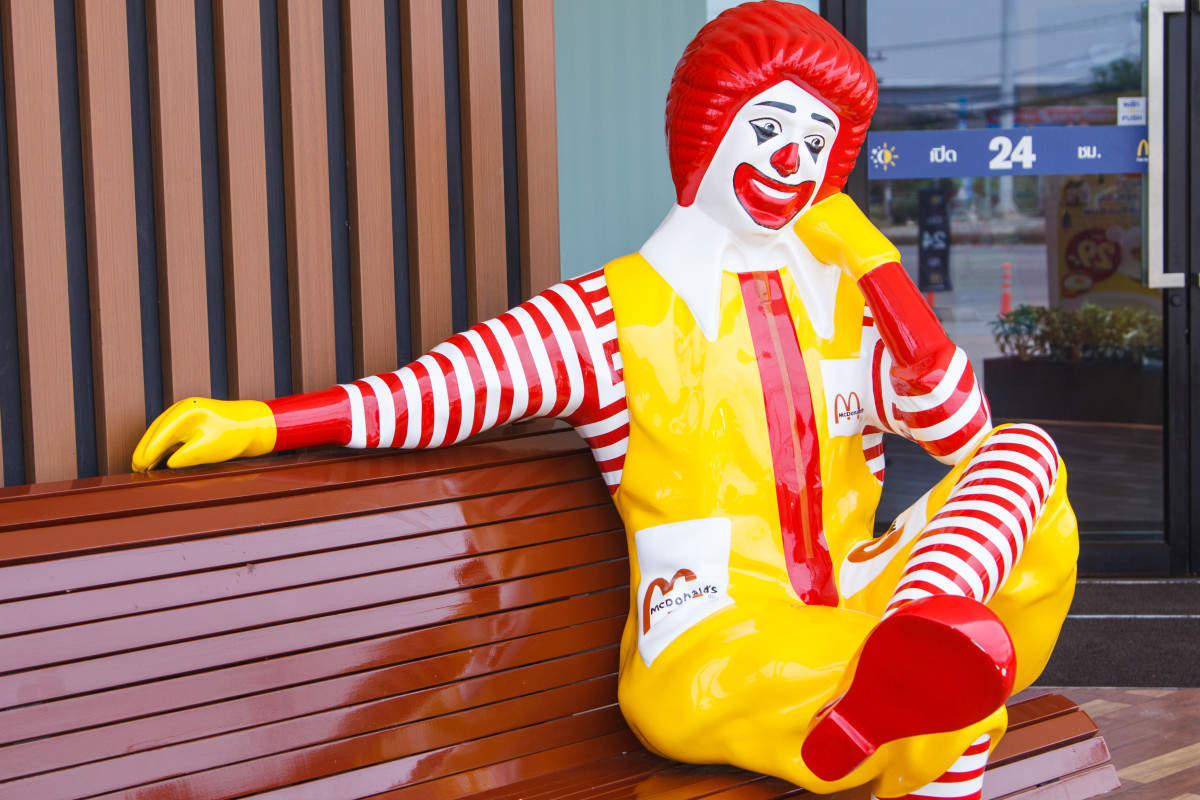The famous golden arches, which pepper the highways and byways of the US, are a testament to McDonald’s ubiquity.
They symbolize not only the corporate success of the company, but its iconic place in American culture. Yet as consumer habits evolve, that success, and the strategy that underpin it, are being tested.
Success creates its own predicament, not least from the fact that there are limits to the number of restaurants that can be opened. With more 16,000 branches across the US, McDonald’s still has some headroom for growth, but nowhere near as much as it once did.
Without new store growth to bolster underlying performance, McDonald’s is more reliant on driving higher sales through existing outlets to boost both its top and bottom lines. Unfortunately, such growth is proving elusive, as the latest quarterly decline in US comparable store sales demonstrates.
The golden arches may still cast their warm glow across the US, but such omnipresence is no longer a guarantee that McDonald’s will be one of the destinations of choice for casual diners.
Indeed, if anything, the company’s current challenge is to widen a customer based that has become more increasingly narrow and focused.
How well do you really know your competitors?
Access the most comprehensive Company Profiles on the market, powered by GlobalData. Save hours of research. Gain competitive edge.

Thank you!
Your download email will arrive shortly
Not ready to buy yet? Download a free sample
We are confident about the unique quality of our Company Profiles. However, we want you to make the most beneficial decision for your business, so we offer a free sample that you can download by submitting the below form
By GlobalDataRecent menu changes, including the introduction of All Day Breakfast options, initially seemed to meet this challenge, drawing in more diners. However, after an initial spike the uplifts have not been sustained – they have been a rhetorical flash in the McDonald’s griddle pan.
Neither has menu change been particularly helpful in reinvigorating the brand. This is especially so with younger consumer segments who increasingly shun the iconic chain in favour of what they see as more premium and satisfying offerings from emerging players.
There are several subplots behind McDonald’s loss of ground with consumers.
Common isn’t all that cool
Younger diners don’t necessarily dislike big corporations, but they tend to coalesce around newer, niche brands which they regard as more exciting and authentic. Against these McDonald’s comes across as a little staid and slightly stodgy.
Health concerns also play a role. Younger diners, like the population in general, are more health conscious. This has resulted in a dynamic where people still indulge in fast foods, but do so less often. Consequently, when they do treat themselves they want a better experience and product, even if it means spending more.
This is why most of the growth in dining is at the mid to higher end of the market; a segment where McDonald’s – which is still largely seen as fast, convenient and low priced – does not squarely play.
Operators like Shake Shack have a firmer claim on this territory and are generating better results.
There have certainly been attempts to move the dial on quality. These include the now ditched Create Your Taste initiative, which allowed customers to design their own custom burgers by picking from a range of 35 or so different ingredients. Table service has also been introduced to some restaurants.
Such innovations are interesting, but they are also problematic as they break the McDonald’s fast food business model of simple, consistent products, produced at speed, for a relatively low cost.
Menu variation and higher service levels bring with them more complexity and absorb more staff time. With labour costs increasing, this is an unsatisfactory dynamic and one that is now concerning many franchisees.
Their reluctance will likely limit the pace at which added value services can be rolled out.
A lack of traction with franchisees and the problems of implementing wholesale change mean that shifts will only ever incremental rather than fundamental. Ultimately, this will limit the number of new customers McDonald’s can attract – especially from those who have migrated into more premium parts of the market.
In any case, McDonald’s brand image is not one that naturally supports a more premium offering, especially in a market like the US where much work on the design and ambiance of restaurants is still needed.
Despite all this, McDonald’s is not broken
Its engines are still rapidly spinning; it’s just that they now can’t turn any faster. As such, the solution is not necessarily to overhaul them, but to build an entirely new engine.
This engine could be a new type of restaurant with another brand which establishes a more premium proposition.
It sounds radical, but this is exactly the route that Starbucks is taking with its Reserve Roastery formats, designed to capture a slice of share from the more niche, but high-growth, artisan coffee market.
In all of this lies the truth that in today’s consumer landscape, growth for big companies is often best achieved by thinking small.








Related Company Profiles
Shake Shack Inc
McDonald's Corp
Starbucks Corp